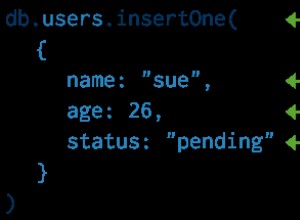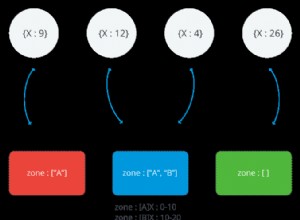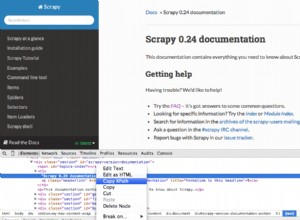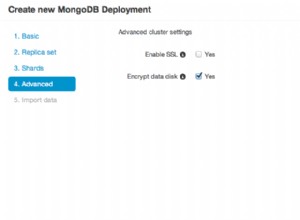Je me suis inspiré de ce https://gist.github.com/mizrael/a061331ff5849bf03bf2 et la mise en œuvre étendue qui a fonctionné pour moi. J'ai créé une fausse implémentation de l'interface IFindFluent et elle dépendait de l'interface IAsyncCursor. J'en ai donc également fait une fausse implémentation et je l'ai utilisée en retour de la méthode fictive que je voulais configurer. Dans cette fausse implémentation, j'ai initialisé un énumérable et l'ai renvoyé dans une méthode que j'utilise. Vous pouvez toujours être plus créatif et jouer avec tout ce que vous voulez rendre. Jusqu'à présent, cela a fonctionné pour moi.
Voici une fausse implémentation.
public class FakeFindFluent<TEntity, TProjection> : IFindFluent<TEntity, TEntity>
{
private readonly IEnumerable<TEntity> _items;
public FakeFindFluent(IEnumerable<TEntity> items)
{
_items = items ?? Enumerable.Empty<TEntity>();
}
public FilterDefinition<TEntity> Filter { get => throw new NotImplementedException(); set => throw new NotImplementedException(); }
public FindOptions<TEntity, TEntity> Options => throw new NotImplementedException();
public IFindFluent<TEntity, TResult> As<TResult>(MongoDB.Bson.Serialization.IBsonSerializer<TResult> resultSerializer = null)
{
throw new NotImplementedException();
}
public long Count(CancellationToken cancellationToken = default)
{
throw new NotImplementedException();
}
public Task<long> CountAsync(CancellationToken cancellationToken = default)
{
throw new NotImplementedException();
}
public long CountDocuments(CancellationToken cancellationToken = default)
{
throw new NotImplementedException();
}
public Task<long> CountDocumentsAsync(CancellationToken cancellationToken = default)
{
throw new NotImplementedException();
}
public IFindFluent<TEntity, TEntity> Limit(int? limit)
{
throw new NotImplementedException();
}
public IFindFluent<TEntity, TNewProjection> Project<TNewProjection>(ProjectionDefinition<TEntity, TNewProjection> projection)
{
throw new NotImplementedException();
}
public IFindFluent<TEntity, TEntity> Skip(int? skip)
{
throw new NotImplementedException();
}
public IFindFluent<TEntity, TEntity> Sort(SortDefinition<TEntity> sort)
{
throw new NotImplementedException();
}
public IAsyncCursor<TEntity> ToCursor(CancellationToken cancellationToken = default)
{
throw new NotImplementedException();
}
public Task<IAsyncCursor<TEntity>> ToCursorAsync(CancellationToken cancellationToken = default)
{
IAsyncCursor<TEntity> cursor = new FakeAsyncCursor<TEntity>(_items);
var task = Task.FromResult(cursor);
return task;
}
}
public class FakeAsyncCursor<TEntity> : IAsyncCursor<TEntity>
{
private IEnumerable<TEntity> items;
public FakeAsyncCursor(IEnumerable<TEntity> items)
{
this.items = items;
}
public IEnumerable<TEntity> Current => items;
public void Dispose()
{
//throw new NotImplementedException();
}
public bool MoveNext(CancellationToken cancellationToken = default)
{
throw new NotImplementedException();
}
public Task<bool> MoveNextAsync(CancellationToken cancellationToken = default)
{
return Task.FromResult(false);
}
}
Voici comment j'ai configuré ma méthode fictive pour renvoyer ce que je voulais pour mes tests unitaires.
mockParticipantRepository
.Setup(x => x.FindByFilter(It.IsAny<FilterDefinition<Participant>>()))
.Returns(new FakeFindFluent<Participant, Participant>(participantsByRelation));
J'espère que ceci est utile.




